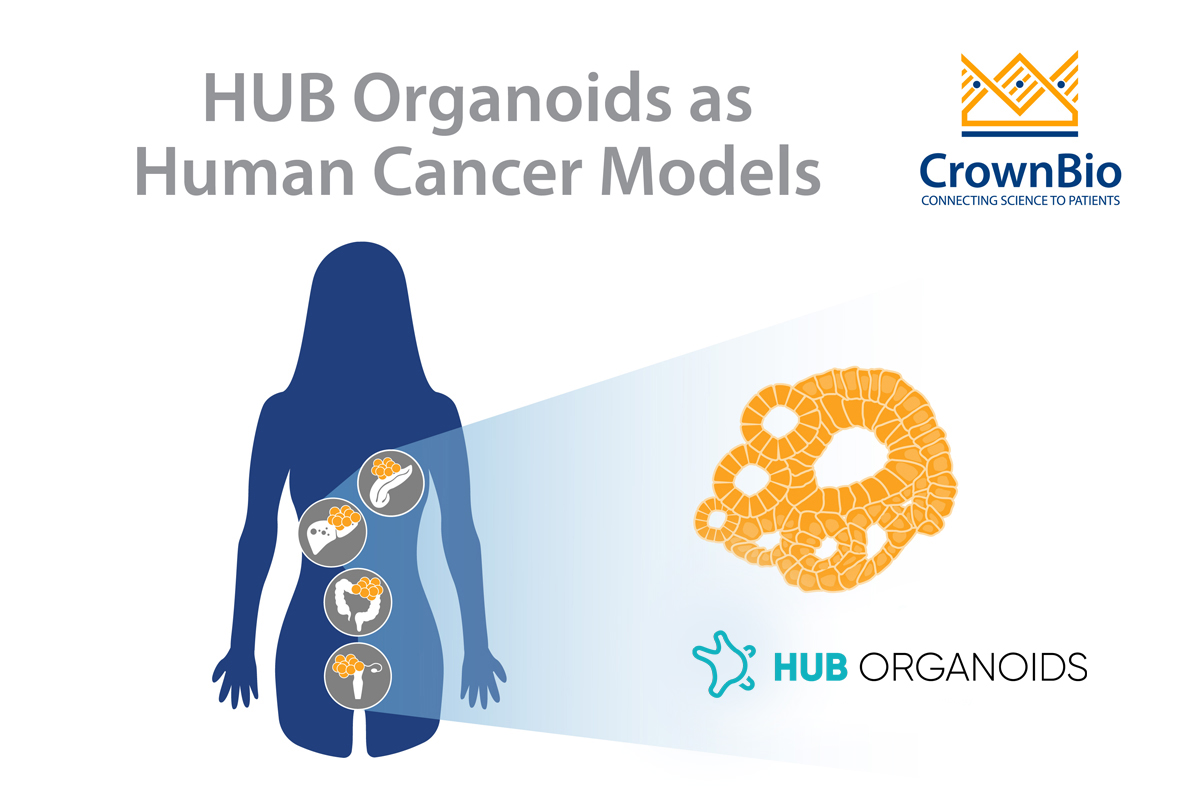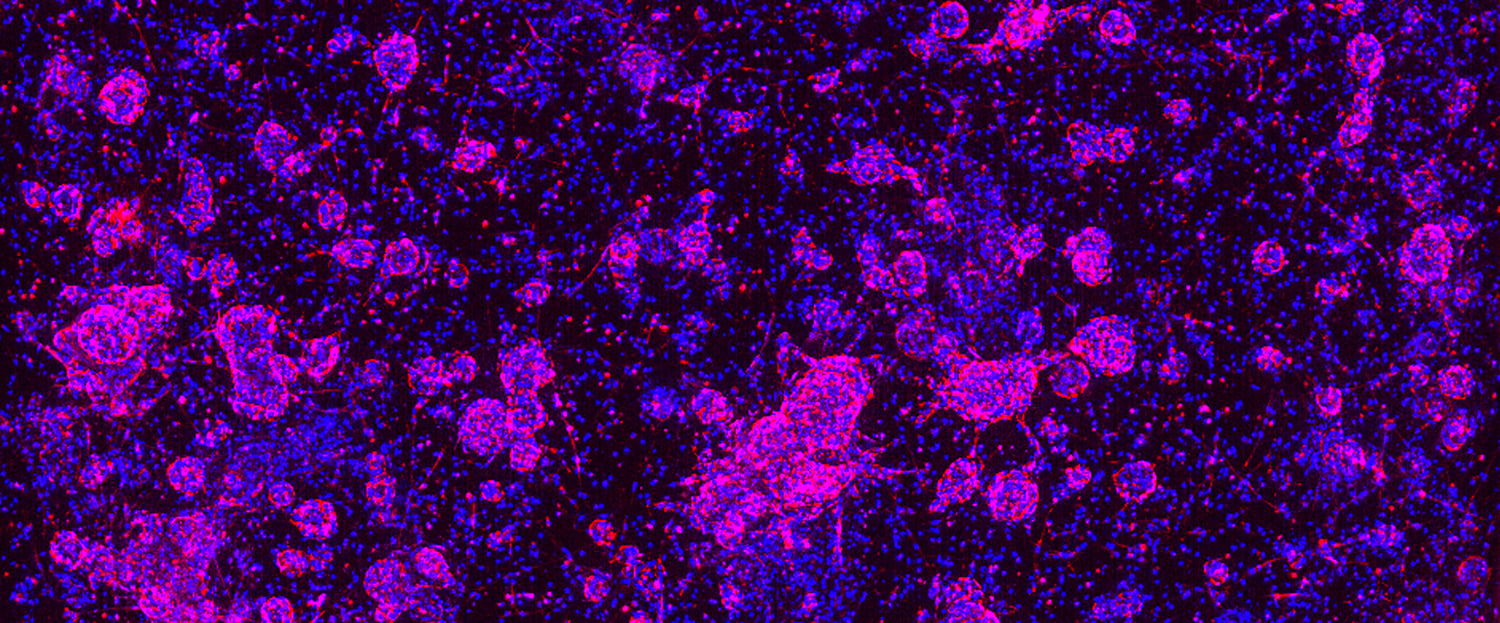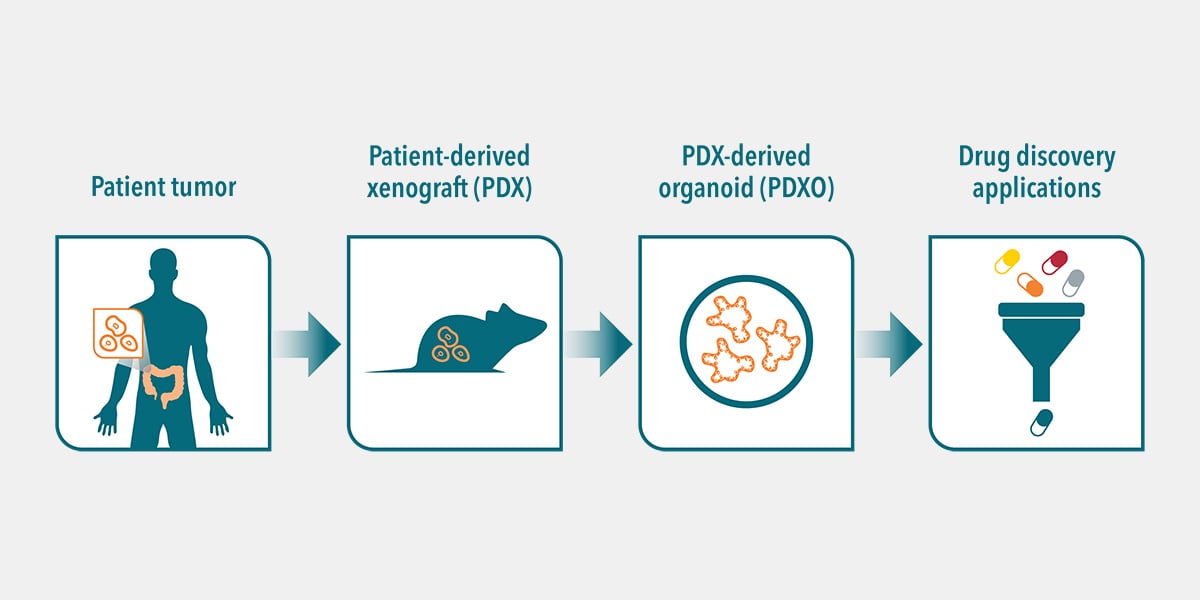 Explore the phenotypic and genetic concordance between HUB patient-derived tumor organoids and the primary human cancers they were derived from, highlighting the relevance of HUB Organoids as human cancer models.
Explore the phenotypic and genetic concordance between HUB patient-derived tumor organoids and the primary human cancers they were derived from, highlighting the relevance of HUB Organoids as human cancer models.
Patient-Derived Tumor Organoids
Hubrecht Organoid Technology (HUB) has developed optimized protocols to produce tumor organoids from a variety of primary human cancers. These 3D in vitro tumor models faithfully recapitulate the phenotypic and genetic features of the original patient tumor. These important properties are maintained indefinitely in vitro due to HUB protocols preventing the rapid exhaustion of the organoids.
HUB Organoids Recapitulate the Complexities of Tumor Tissue
Many studies have demonstrated that patient-derived tumor organoids faithfully recapitulate the complexities of tumor tissue heterogeneity and structure. This includes the presence of both cancer stem cells (CSCs) and their downstream more-differentiated progeny.
In this post, we highlight the concordance of key phenotypic and genomic features between organoids and originating patient tissue (organoid/tumor pairs) across different cancer types such as pancreatic, ovarian, liver, and colorectal cancer.
1. Pancreatic Cancer Organoids
- This study from Boj et al eloquently described organoid generation from both normal and diseased pancreatic patient tissue. Murine models of pancreatic ductal adenocarcinoma were also developed through culture condition modification.
- Patient-derived organoids expressed characteristic markers of ductal pancreatic cells but not markers of other pancreatic cell types. Tumor organoids were highly aneuploid, like their corresponding primary tumors, and unlike normal, diploid pancreatic organoids.
- Tumor organoids showed genetic defects seen in the primary tumor but not normal organoids (i.e. amplification of MYC, loss of tumor suppressors TGFBR2 and DCC, and defects in KRAS, TP53, SMAD, and CDKN2A).
- Orthotopically transplanting human pancreatic tumor organoids into murine models produced morphologic structures reminiscent of the primary tumor including desmoplasia. This is in contrast to normal pancreatic organoids which produced typical ductal structures. Tumor organoid xenografts also progressed toward an invasive phenotype, which was seen in primary tumors.
- Proteomic changes observed by mass spectrometry showed that organoids reflect the parental disease in vivo, i.e. the murine organoid reflects the mouse GEMM model, and the human organoid recapitulates the patient tumor.
2. Ovarian Cancer Organoids
- A biobank of 56 patient-derived ovarian cancer organoids from 32 different patients was established from a range of ovarian cancer subtypes. The biobank of organoid models captured the ovarian cancer intra- and inter-patient heterogeneity.
- Histological analyses showed that tumor organoids had characteristic papillary-like structures, nuclear and cellular atypia, and hobnail cell features not detected in normal/control organoids. Structural features were faithfully recapitulated between organoid/tumor pairs.
- Tumor organoids closely recapitulated the genomic characteristics of the different ovarian cancer subtypes from which they were derived. For instance, almost all tumor organoid lines showed aneuploidy, and copy number variant (CNV) analysis showed similar patterns between organoid/tumor pairs. Furthermore, CNV profiles were robustly maintained after long-term passaging.
- Somatic mutational and amplification/deletion status of sixty relevant genes of ovarian cancer showed strong concordance between the primary tumors and tumor organoids. Epigenetic (methylation) patterns were also maintained in extended passaging of tumor organoids.
3. Liver Tumor Organoids
- In this study, patient-derived liver tumor organoids were successfully generated following the adaptation of culture conditions to allow establishment of a long term organoid culture of primary healthy live cells. The patient-derived organoids represent three of the most common liver cancer subtypes: hepatocellular carcinoma (HCC), cholangiocarcinoma (CC), and combined HCC/CC (CHC).
- Histological analyses revealed similar morphologies between organoid/tumor pairs which ranged from solid/compact structures (HCC and CHC) to more irregularly-shaped cyst-like structures (CC). These morphological features were maintained even after months of culture.
- Marker analysis showed that subtype-specific markers in the tumor organoids expressed the same key diagnostic markers of the matching patient tumors they were derived from, even after long-term expansion in culture.
- Correlation analysis showed high concordance of gene expression between organoid/tumor pairs, but not with the other subtypes.
- Mutational landscape analyses showed that the global variant profiles from the primary tumors were highly retained in both short-term (less than 2 months) and long-term organoid cultures.
- After long-term expansion in vitro, tumor organoids were transplantated in vivo to assess their tumorigenicity and capacity to form secondary organoids (i.e. tumor organoids from the xenografted tumors). After transplantation, tumor outgrowths were observed with the tumor organoids but not healthy control organoids. Tumor organoids developed from the xenografted tumors were shown to have similar chromosome counts and were morphologically and histologically indistinguishable from their parental lines.
4. Colorectal Cancer (CRC) Organoids
- A living biobank of 22 patient-derived colorectal tumor organoids was established representing the major CRC molecular subtypes. Normal organoids from healthy epithelium were also generated.
- Histological analyses revealed similar architecture between organoid/tumor pairs.
- Genetic comparison of organoid/tumor pairs showed a high degree of concordance in somatic variants within coding regions and common driver mutations. Additional analyses demonstrated that the most frequently affected genes in CRC were represented in the organoids. This included inactivating alterations to key tumor suppressor genes (APC, TP53, FBXW7, and SMAD4), and activating mutations in KRAS and PIK3CA. Organoids with hypermutated phenotypes were associated with increased mutations of genes in DNA mismatch repair (MMR)-associated pathways.
Collectively, these findings highlight the value of using tumor organoids to model many different types of human cancer. This includes cancer types that are complex and heterogenous, and which can be very challenging to model in vitro.
Despite parental tumor complexities, tumor organoids have been shown to faithfully recapitulate the genomic, morphological, and pathophysiological characteristics of their parental tumor, and the preservation of these features provides highly patient-relevant 3D in vitro tumor models for cancer research and drug discovery.
In addition, large collections of tumor organoids (“biobanks”) can be generated to include a wide spectrum of tumor types and/or subtypes that are clinically relevant and capture the heterogeneity observed in patient populations, as well as normal healthy organoids. This provides researchers with a unique model for understanding disease and for the development of novel therapies.
Conclusion
Patient-derived tumor organoids have been reliably established from a variety of primary human cancers. These 3D in vitro tumor models faithfully recapitulate the phenotypic and genetic features of the original patient tumor which are maintained over long-term expansion of the cultures, which makes HUB Organoids ideal as in vitro human cancer models.









